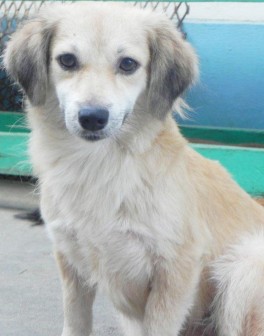Today we begin a new theme.
Bones and muscles (the musculosketal system) are so interlinked that we have decided to treat their ailments together.
Firstly, some general information is needed. In terms of basic data on the musculosketal system, I have not found a better description than that provided by Drs Carlson and Giffin in their book on veterinary matters. We are reproducing some of the salient points documented by these authors.
 The dog’s skeleton is made up of an average of 319 individual bones connected by ligaments and surrounded by muscles. Although the number of bones is roughly the same in all breeds of dog, there is considerable variation in size and shape. This is due to selective breeding.
The dog’s skeleton is made up of an average of 319 individual bones connected by ligaments and surrounded by muscles. Although the number of bones is roughly the same in all breeds of dog, there is considerable variation in size and shape. This is due to selective breeding.
The outside of a bone is called the cortex. It is composed of minerals and protein. The cortex gives the bone rigidity. Inside is the marrow cavity. Bone marrow is important in red blood cell production.

Nutritional deficiencies can cause impaired bone development, or result in demineralization and bone resorption, making fractures more likely.
The bones of the body are held together by specialized connective tissue called ligaments. This union is called an articulation, or joint.
Bone ends would grate against each other and cause considerable wear if it were not for a protective layer of cartilage over their ends. In some joints (for example, the knee joint) a pad of cartilage is interposed between the two surfaces, giving a cushion effect. Despite the fact that cartilage is tough and resilient, it can be damaged by joint stress and trauma. It is not easily replaced or mended. Once damaged, it may deteriorate, become calcified, and act as a foreign body or irritant to the joint surfaces.
Joint position is maintained by ligaments, tendons and a tough fibrous capsule surrounding the joint. These combine to provide stability or tightness to the joint. Joint laxity is due to loose ligaments and/or a stretched capsule. It can cause slippage of the articulating surfaces, leading to cartilage injury and arthritis.
Joints of the hip and shoulder are called ‘ball and socket’ joints. They move forward and backward, from side to side, or in a circle, but the ball should remain firmly seated in the socket. In some degenerative diseases, for example, hip joint dysplasia, the socket (of the hip bone) does not accommodate the ball (head of the thigh bone).
The rest of the limb joints are of the ‘hinge’ type. They flex and extend in a plane from front to back. They must be stable to prevent the bones from slipping to the sides.
We’ll continue with this theme next week.
Please implement disease preventative measures (vaccinations, routine dewormings, monthly anti-heartworm medication, etc) and adopt-a-pet from the GSPCA’s Animal Clinic and Shelter at Robb Street and Orange Walk, if you have the wherewithal to care well for the animals. Do not stray your unwanted pets, take them to the GSPCA’s Clinic and Shelter instead. If you do not wish your pet to have puppies or kittens, you may exploit the GSPCA’s free spay and neutering programme. If you see anyone being cruel to an animal, or if you need any technical information, please get in touch with the Clinic and Shelter by calling 226-4237.









